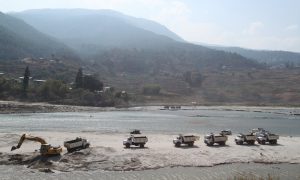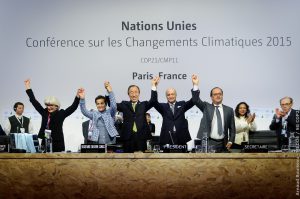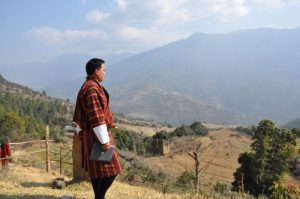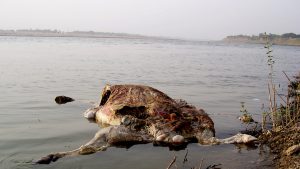Developer Wang Jing’s plans to carve a 173-mile canal through Nicaragua may be on the rocks due to a lack of funds but the law ratifying his 50-year renewable concession and granting him permission to expropriate land for the project appears to be written in stone.
Nicaragua’s parliamentary secretary this week rejected a citizen-led initiative to repeal law 840, which stipulates Wang’s exclusive right to build and operate the canal, saying it did not have the jurisdiction to deal with the proposal submitted on Thursday April 7.
Alba Palacios, first secretary of the legislature and a deputy of the ruling Sandinista National Liberation Front, said the Supreme Court had declared the ‘constitutionality’ of law 840 in 2013 and therefore the national assembly could not repeal it.
But spokespeople for the National Council for the Defense of the Land, Lake and National Sovereignty, the organization behind the new legal initiative, dispute this. They claim it was submitted in accordance with due process and that according to article 138 of Nicaragua’s constitution it is the function of the national assembly to ‘develop and approve laws and decrees, as well as reforming and repealing existing ones’.
“It’s absurd to allege that this ruling of the Supreme Court exists, because that indicates that no law could be reformed if its constitutionality has been declared,” said Mónica López Baltodano, the lawyer representing the initiative.
López Baltodano also said that a legal representative from the first secretary’s office handed her notification of the rejection on Monday April 11 in a letter signed by Palacios but dated April 8. Under Nicaraguan law, the first secretary is obliged to respond to new legal initiatives and either reject or request corrections to them within 24 hours. López Baltodano refused to accept the document and said the campaign will continue to demand that the initiative is dealt with in accordance with the law.
“Our initiative fulfilled 100% of the requirements,” López Baltodano told Diálogo Chino; “what they’re doing is completely illegal.”
Territorial disputes
Indigenous groups living on ancestral territory along the path of the proposed canal route say Wang’s company HKND, has failed to properly consult them on the impacts of the project. Construction would involve the expropriation of around 2,900 km2 of land, 1,721 km2 of which would be expropriated permanently. According to López Baltodano, this constitutes a violation of the Nicaraguan constitution.
The government contends that articles in law 840, having been approved by congress, enable the expropriations.
In November last year, Nicaragua’s Grand Canal Development Commission approved the project’s environmental and social impact assessment, which had been plagued by criticism and delays, and granted it an environmental license. The study, carried out by UK-based consultancy Environmental Resources Management says that ‘major unavoidable adverse impacts’ would include the ‘physical and economic displacement of around 30,000 people’ and the displacement of the last indigenous Rama village.
But the Nicaraguan government has neglected to uphold laws protecting indigenous territorial rights long before it awarded Wang the canal concession, according to Lottie Cunningham, an indigenous Miskito lawyer.
Cunningham said that in failing to fully implement a landmark ruling by the Inter-American Court of Human Rights (IAHCR) which recognises the territorial rights of the country’s indigenous people, the government has allowed a bloody territorial dispute to fester.
According to Cunningham, 24 people have been killed and over 50 seriously wounded by settlers in the North Caribbean Coast Autonomous Region (RAAN) since 2014. Settlers also engage in illegal logging and mining activities, Cunningham says. The Miskito are one of 25 indigenous and Afro-descendant groups for whom the RAAN is considered indigenous ancestral territory.
The IACHR precedent outlined five steps through which Nicaragua should restore land to the country’s indigenous groups. The ruling was subsequently enacted into national law 445, which applies to both the RAAN and the RAAS (the South Caribbean Coast Autonomous Area), where the Rama are located.
However, the fifth and final step of the IACHR process involves the removal, or ‘cleansing’ (saneamiento), of new settlers from these areas.
Following a hearing in October last year, the IACHR recently urged the Nicaraguan government to do more to protect the Miskito and reiterated the community’s right to their ancestral territory, free from violent interference by those encroaching as a consequence of public works concessions.
In response to the IACHR, the Nicaraguan government released a statement ratifying the establishment of the autonomous regions of the Caribbean coast and article five of the constitution which refers to the rights of indigenous people to ‘maintain their communal forms of land ownership’.
The government also said it continues to work for the restitution of the rights of indigenous people and communal property rights and has awarded them land titles representing over 31,500 sqkm.







![Snow leopard in Sikkim captured at night through a camera trap in northern Sikkim [image by WWF-India]](https://dialogue.earth/content/uploads/2016/04/Snow_Leopard_Sikkim-e1598003045152-300x58.jpg)